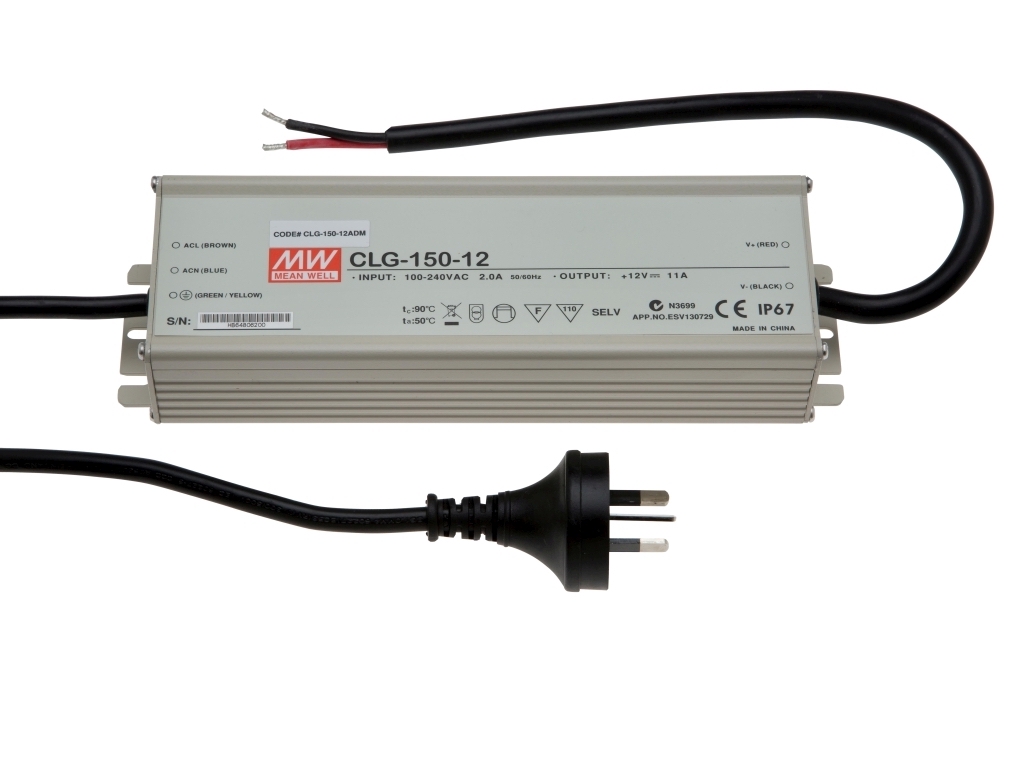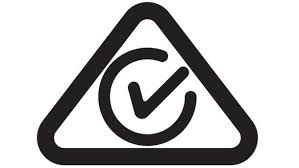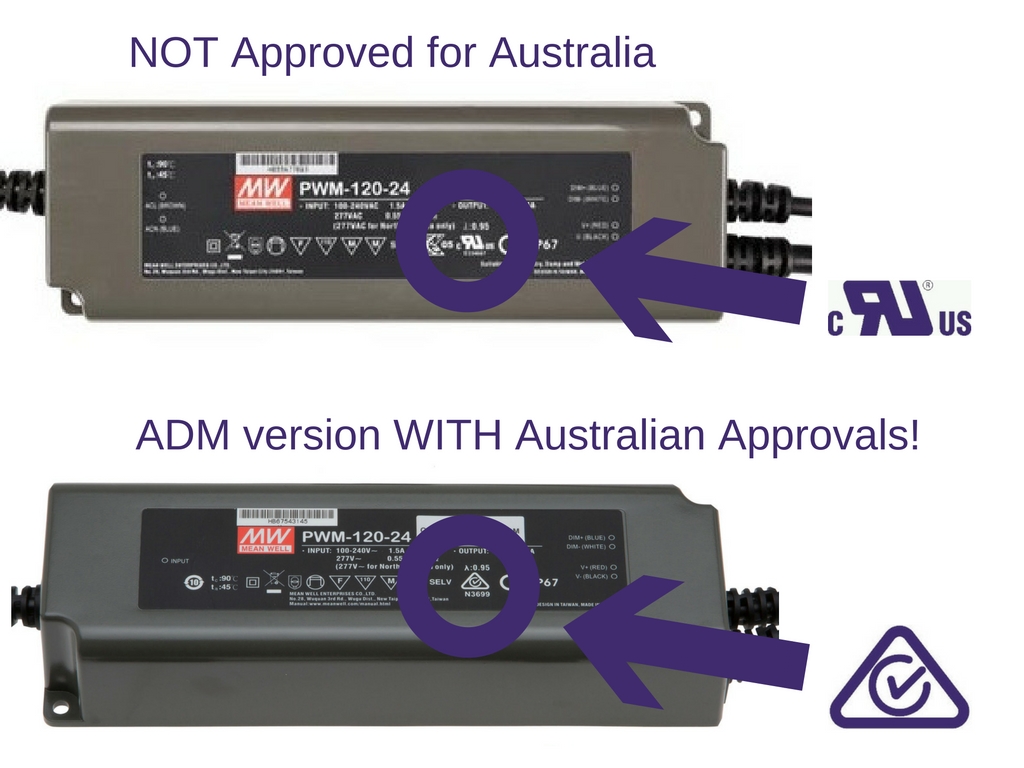Australian Approved LED Drivers – What you need to know
Many of our readers will already know that ADM has a strong commitment to educating our customers and the wider community about the importance of electrical safety approvals.
Our knowledge in this area comes from selling LED drivers before the Australian Standards were introduced.
ADM first started to sell MEAN WELL LED drivers before the International Standards for LED power supplies, EN61347-1 had been finalised.
Soon after the standard was introduced, many LED driver manufacturers were scrambling to meet the requirements and have their testing completed.
MEAN WELL was ahead of the competition, so ADM started to bring in some of the earlier models, including the MEAN WELL PLN-100 and Mean Well CLG series.

As Australian Standards hadn't finalised the additional test requirements for Australian conditions, ADM had to submit the LED drivers we had for additional testing in order to obtain the required certification under the new Australian Standard.
Many LED drivers are classed as ‘prescribed electrical equipment’ (or In Scope Level 3 products) in Australia, which means they must be tested and certified according to Australian standards and show a valid RCM mark on the LED driver’s label.

To obtain an RCM mark the LED driver in question needs to be submitted to an accredited test laboratory to ensure it complies with Australian Standards. Only when the LED driver has passed all the required tests can you submit the issued test reports to the regulators for certification.
This is always time consuming and can be expensive. Testing fees have to be paid even if a product fails, so it's important that we do our homework and are certain the product will pass, before we send it to the test laboratory.
Although it is the importer’s responsibility to ensure that the LED driver complies with Australian Standards, there are still risks to the end user if they unwittingly use a non-approved LED driver. Including:
- The risk of causing injury, death or property damage.
- Expensive product recalls.
Hefty fines and penalties apply to importers, who flout the rules.
Identifying an approved MEAN WELL LED driver from a non-approved MEAN WELL LED driver can be difficult as both are sold under exactly the same part #. In the majority of cases MEAN WELL doesn’t carry out the required testing and certification for Australia. This is looked after by ADM.
Most of the MEAN WELL LED drivers stocked by ADM have had to undergo a design modification before they could pass the required testing. These will display an RCM mark on the product label.
Below is a picture of both an approved PWM-120-24 and a non-approved PWM-120-24.
We have circled the RCM mark shown on the product label.
We have also circled the UL marking on the non-approved version.

This is because in the majority of cases the design change that is required to ensure the LED driver passes Australian testing, also means it is no longer compliant with the North American standards.

The RCM mark will usually be positioned where the UL mark would otherwise have been.
The number of non-approved MEAN WELL LED drivers we see in a week is rather alarming and what is more surprising is that many are being supplied by well-known distributors, who should know better.
We remain in constant contact with the local regulators and recipients of our monthly LED Power Insights Bulletin will be updated if anything regarding LED driver approvals ever changes.
Standards are under constant review and it is prudent to expect changes to be made, especially as new technologies are introduced.
If you have any questions about LED driver approvals don’t hesitate to contact ADM. A member of our expert team will gladly answer any questions that you may have.
Is this Information Useful?
If so, why not share it with your peers and colleagues. Simply click on the blue LinkedIn share icon below.


